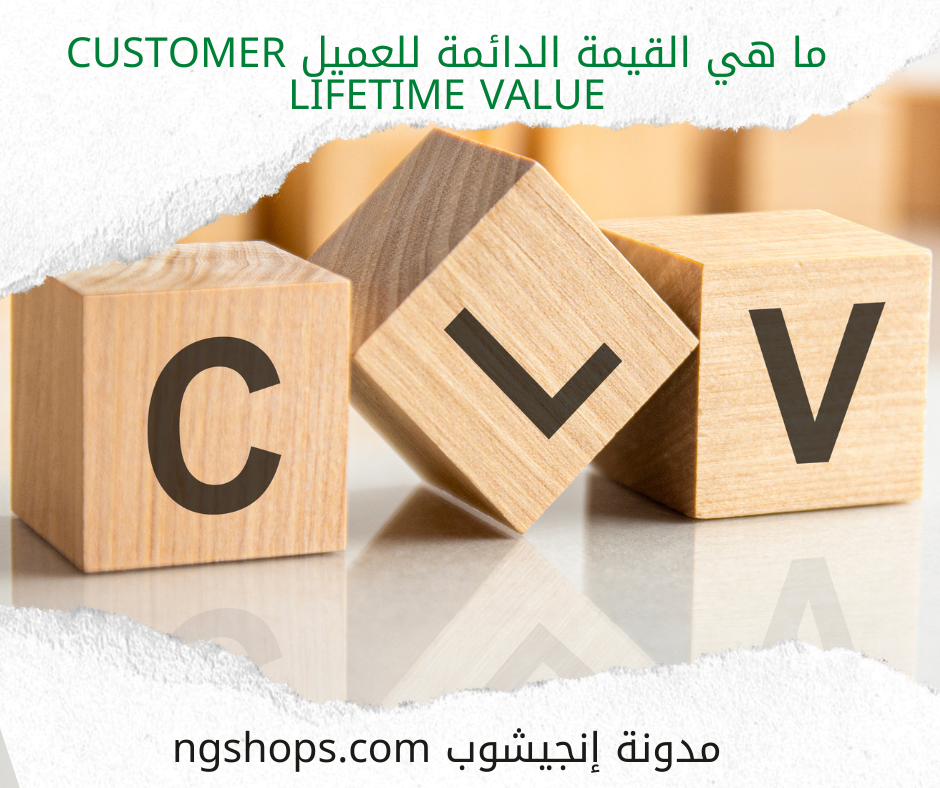What is Customer Lifetime Value? It is no longer important for a customer to make a purchase only once, but all companies want to keep customers for life, as companies achieve large profits from permanent customers, so there has become great importance for permanent customers, and this is the topic of our conversation today on the website. EnglishShop.
Read also: What is Social Marketing?
What is Customer Lifetime Value?
Customer Lifetime Value (CLV), is a measure by which the total revenue from a single customer for a business can be expected during their lifetime. And then by knowing this number. Decisions can be made about how to spend money, either by attracting new customers or retaining existing ones.
Let's take an example. You buy coffee every day from a café near your home. The café earns an average of $5 a day, or $1,825 a year. If you've been buying coffee for 20 years from the same place. This means a total of $36,500. For a coffee shop, this is a large number compared to its operations, and you definitely want to keep it for the long term.
During the same period, how often are you likely to change your home and buy a new one? You'll probably do this once or twice at most. For a real estate agent. He gets a small percentage of the sale, for example, an average of $5,000 at a time. It's not worth the effort to keep you, for such a small amount over a period of time.
What is the importance of calculating Customer Lifetime Value?
Companies don't care about calculating Customer Lifetime Value, only to forecast potential revenue from a repeat customer. But these numbers give information to companies, and adjust their production through them. And trying to reach the maximum possible profit from customers. The importance of customer lifetime value can be detailed by the following reasons:
cost management
Customer Lifetime Value works with another important metric for a company which is Customer Acquisition Cost (CAC).
It refers to the amounts a company spends to attract new customers, including marketing, sales team performance, and offers made to persuade the customer to purchase a product or service.
When you succeed in gaining customer loyalty and converting them into permanent customers, this will make the company able to manage and reduce the cost over time.
The presence of permanent customers reduces its need for new customers, and at the same time, calculating the lifetime value of a customer shows the amount of potential revenue for the company, so that profits can be predicted.
On the contrary, after a period of time, as a result of the offers you make to a regular customer.
A company may find that it doubles its costs for less revenue, which means that the company's profitability declines.
In this case, the company will not seek to offer customized offers to keep the customer with the same enthusiasm, so that he can control the cost.
If the customer persists, that's fine of course, but at no additional cost.
Know the company's best products or services
Not all companies offer the same product or service. Many companies operate on the basis of offering a different range of products or services. The customer lifetime value is not necessarily the same in all of the company's products, but rather a difference occurs as a result of the different resources used in production.
When calculating the Customer Lifetime Value for all products, the company will know:
- Product that provides the highest profitability: When calculating the CLV for each individual product, by taking its average value, the company will be able to know which product provides it with the highest profitability.
- Therefore, he can try to entice customers to buy this product over another, and redouble his marketing efforts to sell it.
- Products that customers want with the highest CLV possible: Of course it is not necessary for customers to come up with the most profitable product, even with marketing efforts.
- Therefore, the company can find out what other products customers want, and give them the highest CLV value possible.
- This does not mean that the products are higher in sales, because they may be more expensive.
- So winning it is not the best. It means products that have a balance between their selling price and good profits.
Read also: Is marketing limited only to advertising?
Knowing which customers are best for the company
Just as the products a company offers vary, so does the customer lifetime value of the customers who buy those products.
Of course, the customer does not have to buy only one product, but he may want more than one thing.
When a customer goes to a coffee shop, even if they prefer coffee, they are sometimes likely to buy other drinks.
Therefore, through the analyzes of customer information that the company possesses, mainly by indicating different customer personas, it will be able to know its most important customers in order to achieve its profitability.
The company can calculate the CLV for each group, thus knowing who is worthy of its marketing efforts to attract more of them to buy, as well as retain them consistently.
Measure the quality of your presentations
Companies certainly strive to increase customer retention, so they are given a variety of offers, customer loyalty programs and other methods.
When you know the Customer Lifetime Value, specifically the repeat customer who gives the company the best profitability, it will be possible to evaluate customer performance Offer value to the customer.
This doesn't necessarily mean they stop offering offers to everyone, but it is important to allocate a fair amount of offers to their best customers.
As long as they give the company the best profitability, they deserve more attention.
This can increase their numbers, thus doubling the profits generated through them.

